

Harold Houseman
1900 - 1918
We have no Service Record for Harold Houseman but we Know from his Medal Card that he was in the
King’s Own Yorkshire Light Infantry ( KOYLI ), his number being 62298.
We know from the Commonwealth Graves Commission that he was a Private, his battalion ( 1/4th Bn
King's Own Yorkshire Light Infantry ), the date he died & where he is buried.
We know the following from letters sent to his parents by Harold and also from a long letter to his parents
sent from his pal Frank Parker ( who was recovering in hospital from wounds received) after Harold’s
death.
In mid January 1918, we do not know how long he had been there, Harold was at Brocton training camp in
Staffordshire. He was a Private with the 53rd Bn Yorkshire Light Infantry, number 93193.
On the 12 April at 6pm he and 11 others left Brocton camp for Folkestone arriving at 3am the following
morning, the 13 April. They left Folkestone at 2pm for France.
King’s Own Yorkshire Light Infantry ( KOYLI ), his number being 62298.
We know from the Commonwealth Graves Commission that he was a Private, his battalion ( 1/4th Bn
King's Own Yorkshire Light Infantry ), the date he died & where he is buried.
We know the following from letters sent to his parents by Harold and also from a long letter to his parents
sent from his pal Frank Parker ( who was recovering in hospital from wounds received) after Harold’s
death.
In mid January 1918, we do not know how long he had been there, Harold was at Brocton training camp in
Staffordshire. He was a Private with the 53rd Bn Yorkshire Light Infantry, number 93193.
On the 12 April at 6pm he and 11 others left Brocton camp for Folkestone arriving at 3am the following
morning, the 13 April. They left Folkestone at 2pm for France.
In France
They arrived at Boulogne at 5pm in the afternoon and after waiting until 10pm they then caught a train to
Etaples arriving in the early hours of the 14 April.
On the 16 April Harold was transferred to X coy 1/4th Bn King’s Own Yorkshire Light Infantry as a Private,
number 62298.
The 1/4th Bn King’s Own Yorkshire Light Infantry were part of the 49th ( 3rd West Riding ) Brigade of the
49th Division. The West Riding Division was a Territorial Force Division already in existence at the
outbreak of the war.
The Division and Brigades were not numbered until April 1915 previously just named. Arrived in France in
April 1915. Served in France and Flanders until the Armistice.
After a couple of days he left Etaples on the 17 April and travelled via Boulogne, Calais and St Omer to
St Marie Cappel, whilst there his battalion dug reserve trenches and on the 20 April they marched to
Abeele where they stayed the night and continued the next day to Toronto Camp, near Poperinghe and
Dickenbusch.
On the 24 April Toronto Camp was shelled by German guns and unfortunately Harold was wounded by
Shrapnel in his arm and shoulder. He was taken to 83 General Hospital, Boulogne where he died on the
26 April.
Because of his overseas service in a theatre of war he was awarded the British War Medal and
Victory Medal.

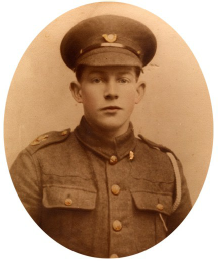
Private - service number 62298
1/4th King’s Own Yorkshire Light Infantry
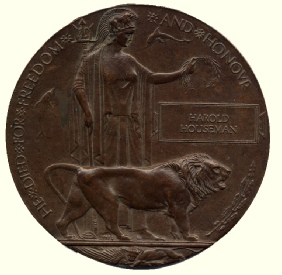
Harold’s ‘Death Plaque’ which his parents
received after his death.
received after his death.
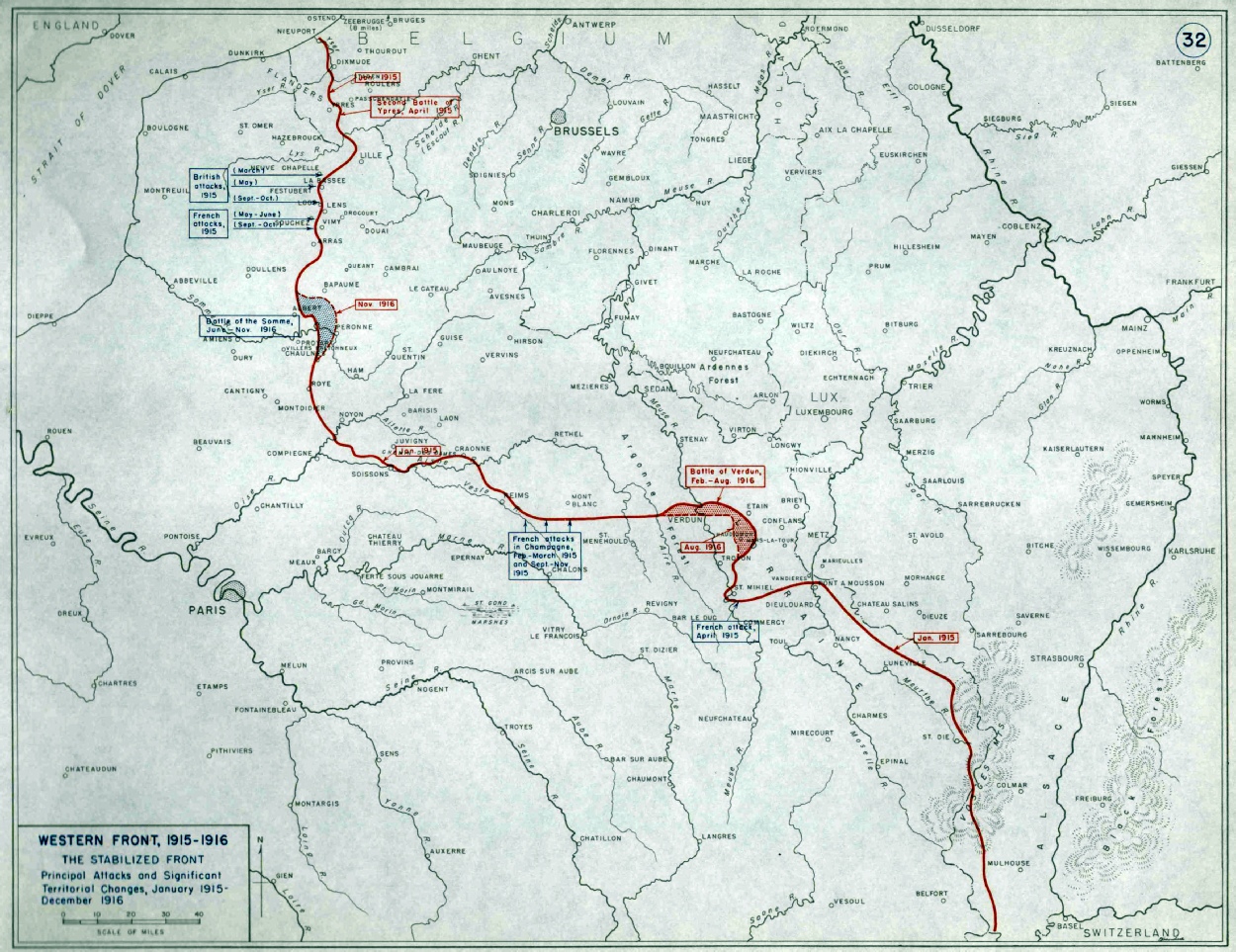
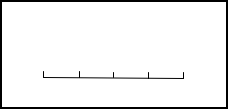
SCALE IN MILES
0
10
20
30
Western Front 1914 -1918
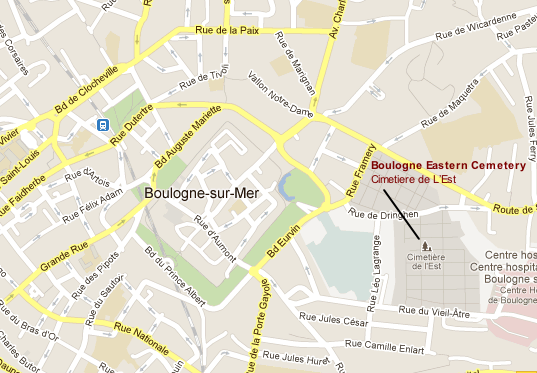

= Toronto Camp where Harold died
Hover your mouse over a circle
for more information
for more information
1918
= Boulogne Eastern Cemetery
Battalions of the Regular Army
1st Battalion
August 1914 : in Singapore. Returned to England and landed at Southampton on 9 November 1914.
9 November 1914 : moved to Hursley Park and on to Harwich on 18 November.
17 December 1914 : returned to Hursley Park and attached to 83rd Brigade in 28th Division.
16 January 1915 : landed at Le Havre.
26 October 1915 : sailed from Marseilles for Salonika, arriving 7 December.
20 June 1918 : left the Division and moved to France, landing at Taranto (Italy) 2 July 1918.
16 July 1918 : attached to 151st Brigade in 50th (Northumbrian) Division.
2nd Battalion
August 1914 : in Dublin. Part of 13th Brigade in 5th Division.
16 August 1914 : landed at Le Havre.
28 December 1915 : transferred to 97th Brigade in 32nd Division.
3rd (Reserve) Battalion
August 1914 : in Pontefract. A depot/training unit, it moved on mobilisation to Hull. Moved to Withernsea in April 1916,
went on to Hedon in October 1916. Pocklington in June 1918 and finally Patrington in August 1918, as part of Humber
Garrison.
Battalions of the Territorial Force
1/4th Battalion
August 1914 : in Wakefield. Part of 3rd West Riding Brigade, West Riding Division. Moved on mobilisation to Doncaster
and in November 1914 to Gainsborough. Moved on to York in February 1915.
12 April 1915 : landed at Boulogne.
15 May 1915 : formation became 148th Brigade, 49th (West Riding) Division.
1/5th Battalion
August 1914 : in Doncaster. Record same as 1/4th Bn.
2 February 1918 : transferred to 187th Brigade in 62nd (2nd West Riding) Division and absorbed 2/5th Bn.
Renamed 5th Bn.
2/4th Battalion
Formed at Wakefield on 30 September 1914 as a second line unit.
1 March 1915 : moved to Bulwell and attached to 187th Brigade in 62nd (2nd West Riding) Division. Moved in April 1915
to Strenshall and on in May to Beverley, going on in November to Gateshead, January 1916 to Larkhill and June 1916 to
Flixton Park near Bungay. Moved again in October 1916 to Wellingborough.
Landed at Le Havre on 15 January 1917.
2/5th Battalion
Formed at Doncaster on 10 September 1914 as a second line unit. Record same as 2/4th Bn.
2 February 1918 : absorbed into 1/5th Bn
3/4th and 3/5th Battalions
Formed at home bases in March 1915 and moved to Clipstone Camp.
8 April 1916 : became Reserve Bns.
1 September 1916 : 4th absorbed 5th Reserve Bn. Moved in October 1917 to Rugeley Camp, going on to Bromeswell in
July 1918 and finally Southend in October 1918
Battalions of the New Armies
6th (Service) Battalion
Formed at Pontefract on 12 August 1914 as part of K1 and attached to 43rd Brigade in 14th (Light) Division. Moved
initially to Woking and on to Witley in November 1914. Moved to Aldershot in February 1915.
21 May 1915 : landed at Boulogne.
19 February 1918 : disbanded in France.
7th (Service) Battalion
Formed at Pontefract on 12 September 1914 as part of K2 and attached to 61st Brigade in 20th (Light) Division. Moved to
Woking and then on to Witley in February 1915, going on to Salisbury Plain in May.
24 July 1915 : landed at Boulogne.
20 February 1918 : disbanded in France.
8th (Service) Battalion
Formed at Pontefract in September 1914 as part of K3 and attached to 70th Brigade in 23rd Division. Moved to Frensham
and then to Aldershot in December 1914. Moved on to Hythe in February 1915 and Bordon in May.
August 1915 : landed at Boulogne.
November 1917 : moved with the Division to Italy.
9th (Service) Battalion
Formed at Pontefract in September 1914 as part of K3 and attached to 64th Brigade in 21st Division. Moved to
Berkhamsted and then to Halton Park (Tring) in October 1914, going on to billets in Maidenhead in November. returned to
Halton Park in April 1915 and went on to Witley in August.
September 1915 : landed in France.
10th (Service) Battalion
Formed at Pontefract in September 1914. Record same as 9th Bn.
13 February 1918 : disbanded in France, with at least some of the men going to 20th Entrenching Battalion.
11th (Reserve) Battalion
Formed in Hull in October 1914 for K4, attached to 90th Brigade of original 30th Division. Moved to Harrogate.
10 April 1915 : converted into a reserve battalion. Moved in November 1915 to Rugeley.
1 September 1916 : converted into 8th Training Reserve Battalion of 2nd Reserve Brigade at Rugeley.
Later became 53rd (Young Soldier) Battalion (see below).
12th (Service) Battalion (Miners)(Pioneers)
Formed in Leeds on 5 September 1914 by the West Yorkshire Coalowners Association. Moved to Farnley Park (Otley).
May 1915 : moved to Burton Leonard (Ripon) and attached as Pioneer Battalion to 31st Division. Moved to Fovant in
October 1915.
December 1915 : moved to Egypt. Went on to France in March 1916.
Between 1 July and 30 November 1917, attached to Fifth Army Troops for work on light railways.
13th (Reserve) Battalion (Pioneers)
Formed at Ripon in October 1915 from the depot companies of the 12th Bn. Moved initially to Harrogate and then to
Gosforth in May 1916.
1 September 1916 : absorbed into Training Reserve Battalions of 19th Reserve Brigade at Newcastle.
Other Battalions
14th (Home Service) Battalion
Formed around November 1916 and came under orders of 216th Brigade of 72nd Division. Moved to Bedford then in May
1917 to Ipswich. Disbanded 8 April 1918.
15th (Service) Battalion
Formed on 11 June 1918, when the 10th Garrison Guard Bn, recently formed in France, became the 15th (Garrison) Bn.
Renamed on 13 July 1918.
11 June 1918 : attached to 120th Brigade in 40th Division.
1st (Reserve) Garrison Battalion
Formed in Newcastle-
2nd Garrison Battalion
Formed at South Dalton in June 1916. Moved to France next month, and joined Fourth Army as Army Troops. July 1918
moved to Lines of Communication.
31 July 1918 renamed 16th (Garrison) Bn.
51st (Graduated) Battalion
Up to 26 October 1917, this was known as 264th Graduated Battalion and had no regimental affiliation. Before that it had
been 90th Battalion of the Training Reserve and up to September 1916 had been the 12th (Reserve) Battalion of the East
Yorkshire Regiment. A training unit based at Ipswich, it was part of 217th Brigade in 72nd Division. In March 1918 when
72nd Division was broken up it went to 208th Brigade of 69th Division at Doncaster. By May 1918 it had moved to
Welbeck and in August 1918 went on to Clipstone Camp.
52nd (Graduated) Battalion
Up to 26 October 1917, this was known as 270th Graduated Battalion and had no regimental affiliation. Before that it had
been 91st Battalion of the Training Reserve and up to September 1916 had been the 15th (Reserve) Battalion of the
York & Lancaster Regiment. A training unit based at Danbury, it came under command of 219th Brigade in 73rd Division.
In March 1918 when 73rd Division was broken up it went to 208th Brigade of 69th Division at Doncaster. By May 1918 it
had moved to Welbeck and in August 1918 went on to Clipstone Camp.
53rd (Young Soldier) Battalion
Up to 27 October 1917, this was known as 8th Young Soldier Battalion and had no regimental affiliation. Before that it
had been 11th (Reserve) Battalion of the King's Own (Yorkshire Light Infantry) (see above). A basic recruit training unit
based at Cannock Chase, it was part of 2nd Reserve Brigade. By November 1918 it had also moved to Clipstone Camp.
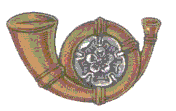
King’s Own Yorkshire Light Infantry
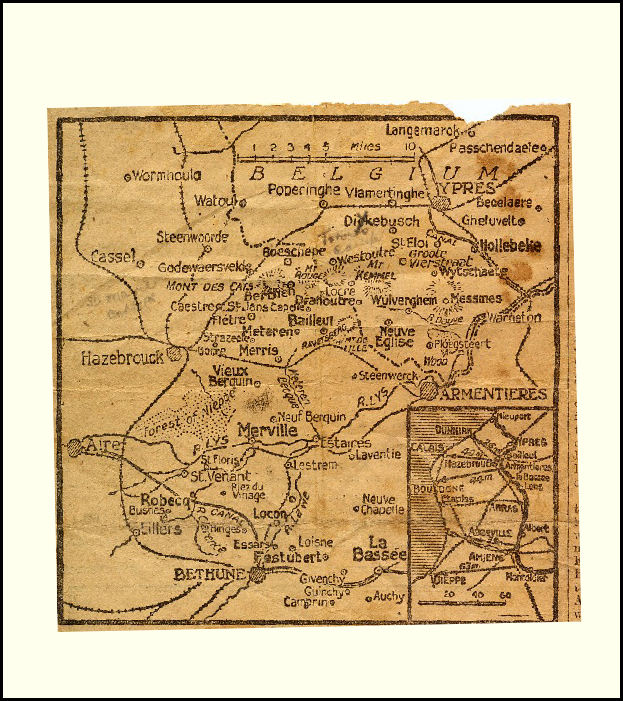
A map showing the location of Toronto Camp sent by
Pte Frank W Parker to Harold’s parents after his death
Pte Frank W Parker to Harold’s parents after his death
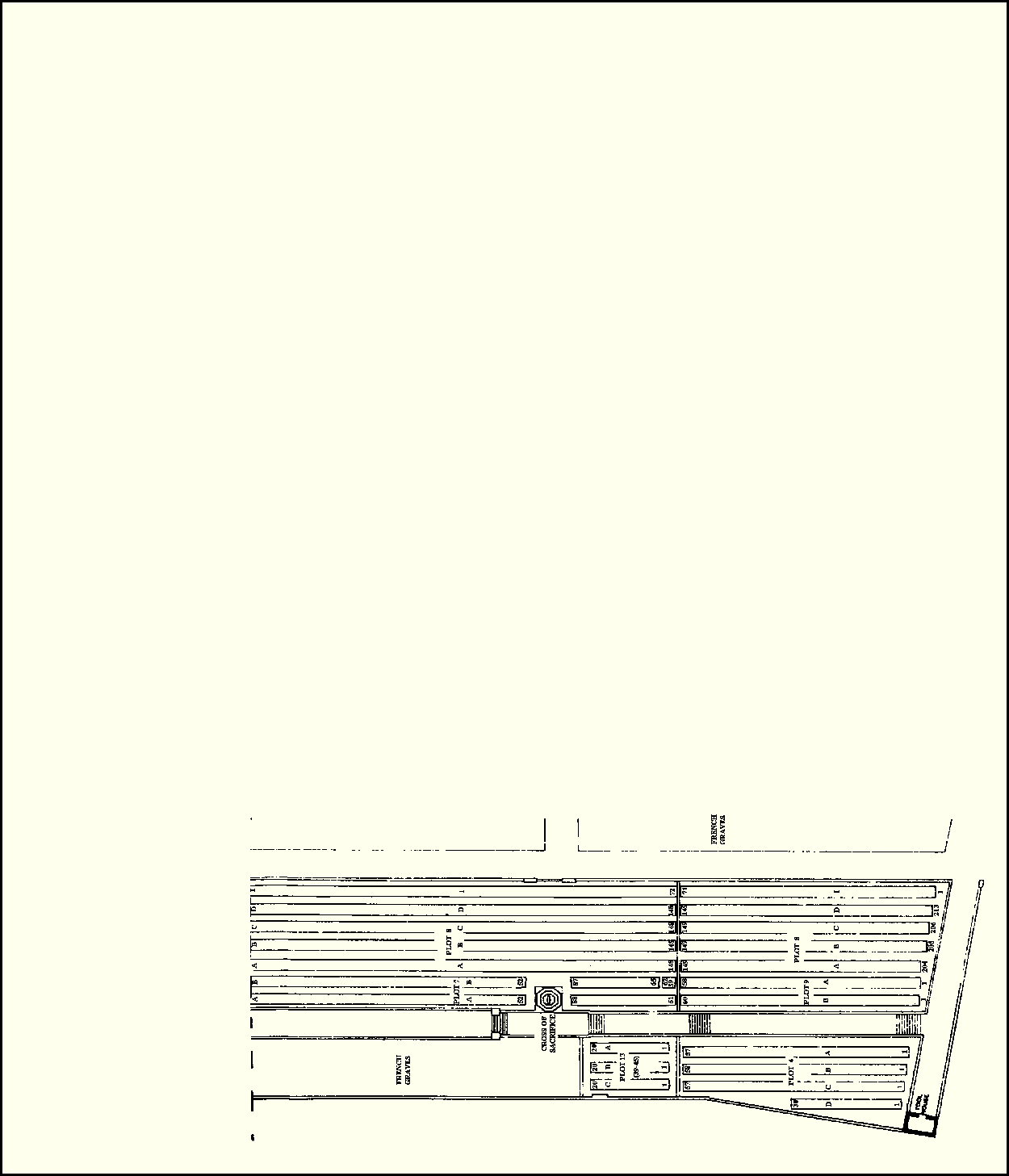
X
Y
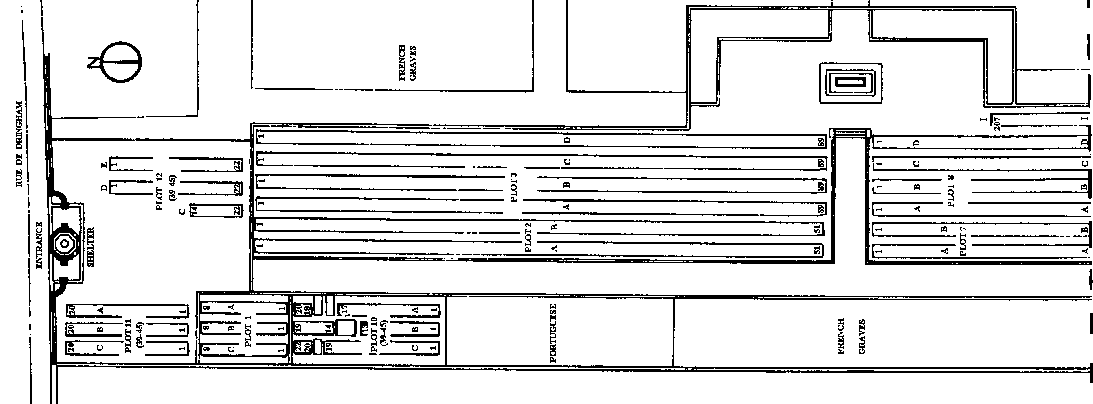
X
Y


Private Harold Houseman
died on the 26 April 1918, Aged 18
whilst serving with the
1/4th Bn King’s Own Yorkshire Light Infantry.
He is buried at the
Boulogne Eastern Cemetery, France
(Location IX. A. 25.)
died on the 26 April 1918, Aged 18
whilst serving with the
1/4th Bn King’s Own Yorkshire Light Infantry.
He is buried at the
Boulogne Eastern Cemetery, France
(Location IX. A. 25.)
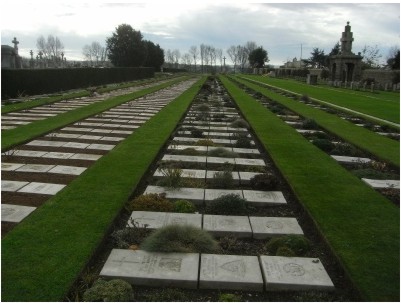
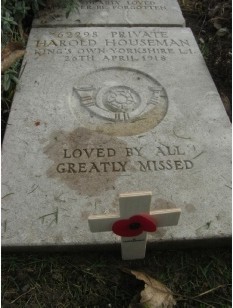
Boulogne, was one of the three base ports most extensively used by the Commonwealth
armies on the Western Front throughout the First World War.
It was closed and cleared on the 27 August when the Allies were forces to fall back ahead of the German advance, but was opened again in October and from that month to the
end of the war,
Boulogne and Wimereux formed one of the chief hospital areas. Until June 1918, the dead from the hospitals at Boulogne itself were buried in the Cimetiere de L'Est, one
of the town cemeteries, the Commonwealth graves forming a long, narrow strip along the right hand edge of the cemetery. In the spring of 1918, it was found that space was
running short in the Eastern Cemetery in spite of repeated extensions to the south, and the site of the new cemetery at Terlincthun was chosen.
During the Second World War, hospitals were again posted to Boulogne for a short time in May 1940. The town was taken by the Germans at the end of that month and
remained in their hands until recaptured by the Canadians on 22 September 1944. Boulogne Eastern Cemetery contains 5,577 Commonwealth burials of the First World War
and 224 from the Second World War. The Commonwealth plots were designed by Charles Holden.
armies on the Western Front throughout the First World War.
It was closed and cleared on the 27 August when the Allies were forces to fall back ahead of the German advance, but was opened again in October and from that month to the
end of the war,
Boulogne and Wimereux formed one of the chief hospital areas. Until June 1918, the dead from the hospitals at Boulogne itself were buried in the Cimetiere de L'Est, one
of the town cemeteries, the Commonwealth graves forming a long, narrow strip along the right hand edge of the cemetery. In the spring of 1918, it was found that space was
running short in the Eastern Cemetery in spite of repeated extensions to the south, and the site of the new cemetery at Terlincthun was chosen.
During the Second World War, hospitals were again posted to Boulogne for a short time in May 1940. The town was taken by the Germans at the end of that month and
remained in their hands until recaptured by the Canadians on 22 September 1944. Boulogne Eastern Cemetery contains 5,577 Commonwealth burials of the First World War
and 224 from the Second World War. The Commonwealth plots were designed by Charles Holden.
Harold’s Grave

Boulogne Eastern Cemetery